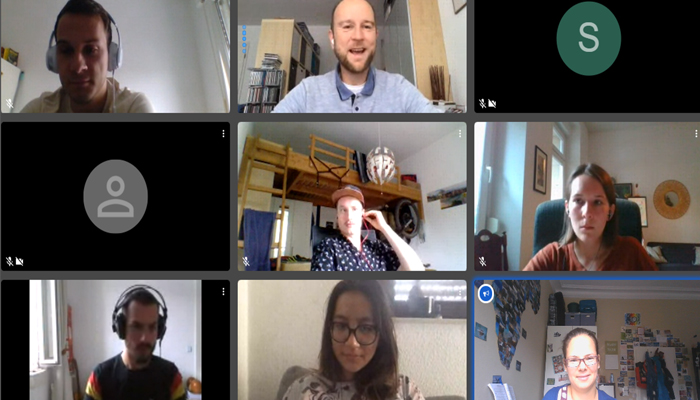MathSEE Modeling Week 2020 - Students work on interdisciplinary applications of mathematical methods
The KIT Centre "MathSEE", which bundles interdisciplinary mathematical research at KIT, hosted a Modelling Week for students for the second time. Students as well as two scholarship holders of the project Simulated Worlds presented their research results from the topics fibre optic networks, mechatronic systems and solar power plants.
Students of a mathematical-methodological subject and of the "SEE subjects" - Sciences, Engineering, and Economics - took part in the MathSEE Modelling Week from 16 to 21 August 2020, which, due to pandemic conditions, took place via video conference except for the final event. The KIT Centre "MathSEE" has been bundling interdisciplinary mathematical research at KIT since October 2018 and organised a Modeling Week for students for the second time. In the final event on 21 August 2020 at Campus South, the students presented their results in front of a few spectators (participants and organisers of the week as well as problem solvers). Two scholarship holders from the Simulated Worlds project also took part in this event. They spent an entire school year researching the optimisation of a solar thermal power plant under the supervision of Sarah Schönbrodt (SCC). They also presented their findings.
On 16 August 2020, students from various degree programmes gathered in a "virtual classroom" to participate in MathSEE Modelling Week 2020. This format was completely new for all participants. They would spend the next few days virtually exploring exciting problems from real research at the KIT MathSEE Centre.
After an extensive evening of getting to know each other, the work in the groups began. The supervising research assistants Pia Stammer (SCC) and Simon Rapp (IPEK) introduced the problems. This year, the students dealt with two topics:
- The fibre orientation in glass fibre networks, which has a decisive influence on the mechanical properties of fibre-reinforced polymers: The aim here is to write an algorithm that determines the orientations of cast glass fibre networks as accurately as possible.
- Machine-readable description of the emergence of new mechatronic systems, which are developed on the basis of existing systems: The change of a known system on the potential and risks of the new system was investigated.
In terms of content, these two problems are far apart, yet they have one thing in common: both problems were previously unsolved and stem from current research at the KIT Centre MathSEE. The task of the groups was to develop approaches to their problems. To do this, they learned about mathematical modelling and applied it extensively. This gave them an insight into everyday research at a university and they had to solve the problems that arose there themselves. During the week, the students worked together using the communication and collaboration platforms Mattermost, MS Teams and CoCalc. This allowed them not only to communicate with each other and discuss the problems, but also to code together on the same code.
On 21 August 2020, the students and two pupils of the Simulated Worlds grant presented their impressive research results to their problem solvers. Despite more difficult conditions due to the Corona requirements, this run was also successful.
We would like to take this opportunity to thank all those who contributed to this interesting and instructive week, either by posing a problem, by promoting the project or by helping with the preparations!
Impressions from the other modeling Weeks

